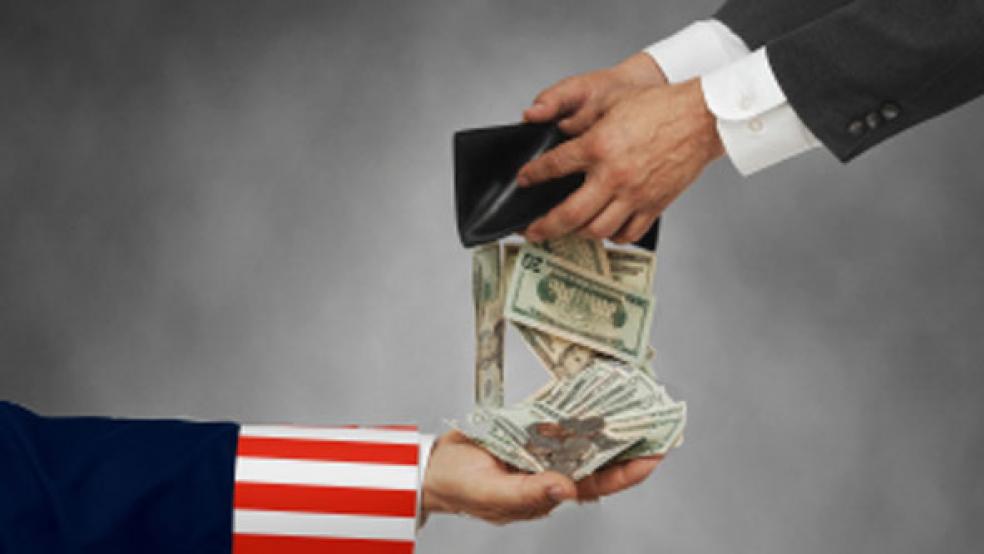Though April 15 has passed, Americans are still a week away from the finish line when it comes to paying their taxes. This year, it will take the average American until April 24 to work enough to pay off their share of federal, state, and local taxes. We spend 30 percent of the year working to pay the government before we can start to keep the money that we earn.
April 24 is the average Tax Freedom Day, as calculated by the nonpartisan Tax Foundation. But the date when Americans are free to start working for themselves varies across states and income levels.
Related: 11 New Tax Laws House Republicans Want to Pass Now
In total, Americans will pay about $4.8 trillion in taxes this year, which is more than they’ll spend on food, clothing and housing combined. Of this total, $3.3 trillion goes to the federal government and $1.5 trillion is paid to state and local governments.
Connecticut and New Jersey share the infamous honor of having the latest Tax Freedom Day. Average residents of these states are not free to keep the money that they earn for about another month, until May 13. On the other end of the spectrum, Louisiana residents had their average total tax bill paid off two weeks ago, on April 2.
This spread between high- and low-tax states would be even wider if not for the federal deduction of state and local taxes, which totaled $56 billion last year. Currently, these taxes can be subtracted from total federal taxable income, which creates a large subsidy for high-tax jurisdictions.
Related: Outrageous Public Pensions Could Bankrupt These States
Taxpayers in low-tax states are forced to pay higher federal taxes to cover the reduced burden on those in high-tax states. State and local governments are rewarded for poor fiscal management since they can export part of their costs to residents of other states.
One benefit of the recently-proposed tax plan by Sens. Mike Lee, R-Utah, and Marco Rubio, R-Fla., is that it ends the deduction for state and local taxes. In exchange, the plan calls for an additional $2,500 child tax credit and simplified individual and corporate tax brackets.
Though the claim that the rich do not pay their fair share of taxes is common, that does not mean it is true. In 2012, the top 1 percent of income earners paid 38 percent of federal taxes, even though they earned 22 percent of total adjusted gross income. This means that this group’s effective income tax rate is 23 percent. In contrast, the bottom half of income earners paid only 3 percent of federal income taxes and earned 11 percent of total adjusted gross income, leading to an effective income tax rate of 3 percent.
Related: The Ten Worst States for Paying Taxes
Individuals in the top fifth of incomes receive less than 20 cents back for every dollar they pay in federal taxes. Those in the bottom fifth receive more than $18 in federal benefits for every dollar that they pay. Those in the middle quintile are net winners as well, as they receive benefits that are more than double what they pay in federal taxes. When state and local taxes and benefits are included, the same trend holds, though the magnitude of difference is less dramatic.
At the turn of the 20th century, Tax Freedom Day came in late January. Back then Americans paid only 6 percent of their income in taxes. Until the 1950s, Tax Freedom Day rarely came past the end of March.
Though Americans are undoubtedly relieved that they have put tax filing behind them, their high overall tax burden puts a strain on the economy by creating disincentives to work and invest. Elected leaders at all levels of government should work to cut government spending and lower taxes.
This story was originally published in U.S. News and World Report.
Top Reads from The Fiscal Times:





